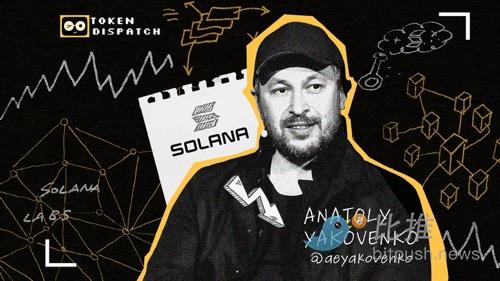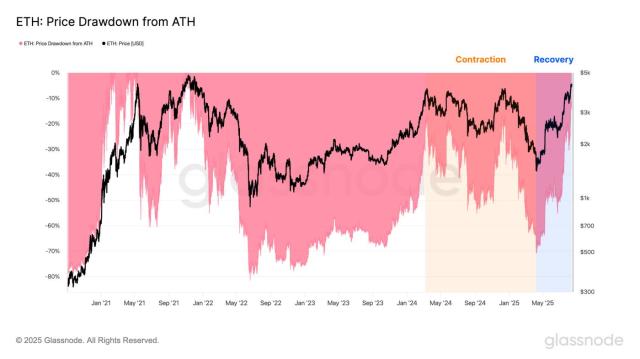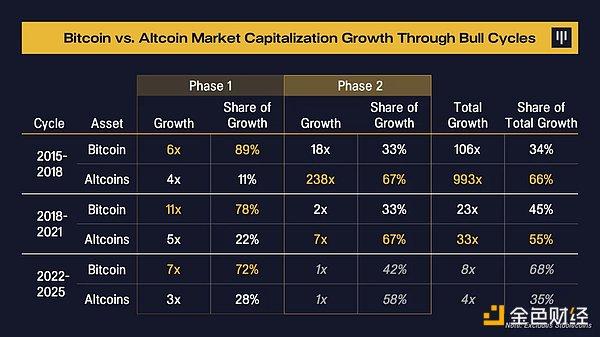Source: Token Dispatch
Original Title: Anatoly Yakovenko: The Soul of Solana
Compiled and Organized by: BitpushNews

Anatoly Yakovenko was furious at the time.
It was 2017, and a news report stated that the Bitcoin Conference announced it would stop accepting Bitcoin payments because transaction fees had skyrocketed to $60-70 per transaction. This global top-tier cryptocurrency conference couldn't even use cryptocurrency.
So he did what any frustrated engineer would do - he went to Café Soleil in San Francisco, ordered two coffees and a beer, and stayed until 4 AM thinking: Why is Bitcoin so slow?
Between his second espresso and the last sip of beer, Yakovenko had his "Eureka moment": a method of encoding time passage into a data structure. At the time, he didn't know this was called a "verifiable delay function" and couldn't find it on Google, even thinking he had invented an entirely new concept.
In a way, he had indeed done so.
When Solana launched in 2020, it could process 65,000 transactions per second. Today, this blockchain built by Yakovenko in his garage had a peak market value of over $50 billion.
[The rest of the translation follows the same professional and accurate approach, maintaining the original structure and meaning while translating to English.]Each innovation solved different bottlenecks. Together, they created something unprecedented - a blockchain that becomes faster as it scales.
On March 16, 2020, the world was falling apart. Stock markets crashed, countries were locked down, and startups were collapsing everywhere. However, Yakovenko chose this day to launch Solana. A few months later, it proved to be the perfect timing to introduce the world's fastest blockchain.
By the end of 2020, Solana had processed 8.3 billion transactions, created 54 million blocks, and attracted integration from over 100 projects in DeFi, gaming, and Web3 domains. The number of validators grew to over 300 nodes globally, which was an impressive figure for a network less than a year old.
Developers began building applications that were impossible on slower blockchains: high-frequency trading systems, real-time games, and social media platforms, which were unprecedented in blockchain history.
Downtime Controversy
Success brought new challenges. Solana's high throughput made it a target for malicious traffic and exposed systemic weaknesses.
September 14, 2021: During a Grape IDO, surging transaction volume caused a network fork, resulting in 17 hours of downtime.
May 1, 2022: Automated NFT "blind minting" bots caused consensus collapse, taking the network offline for 7-8 hours.
May 31, 2022: A vulnerability in offline transaction processing led to 4.5 hours of downtime.
October 1, 2022: A configuration error caused 6 hours of downtime.
Critics seized these events to argue that Solana sacrificed decentralization for speed. This "monolithic" design meant that when something went wrong, the entire system would completely collapse.
The team's response was to implement systematic improvements. Better data deduplication, improved nonce handling, fixing fork selection errors, and introducing protocols like QUIC to enhance network reliability.
In November 2022, Solana faced its biggest test - the FTX collapse.
Sam Bankman-Fried, once one of Solana's most prominent supporters, saw his exchange fall, quickly spreading panic. Investors generally believed anything associated with FTX would fail. As people rushed to sell, Solana token prices plummeted.
The Solana community did not wait for others to solve the problem.
FTX had controlled a popular trading platform called Serum, which many Solana users relied on. When FTX collapsed, the platform essentially became an "orphan". No one knew its fate.
Within just a few hours, Solana's developers and community members took action. They copied all of Serum's code and created their own version called OpenBook, completely independent of FTX.
This technical term is called "forking" - creating a new version that works exactly the same, but with ownership issues resolved.
Throughout the entire crisis, Solana itself never stopped working.
Despite price crashes and widespread panic, the blockchain continued processing transactions. No downtime, no technical failures.
Unlike traditional companies where a CEO's arrest might cause company collapse, Solana had grown larger than any individual or company supporting it. The technology and community could survive independently.
Looking Forward
44-year-old Yakovenko has built something remarkable while maintaining a unique quality that combines engineering pragmatism with crypto idealism - a common trait among successful blockchain founders.
He advocates for what he calls "wise rules", such as legislators trying technology before regulating it.
Interestingly, despite wanting crypto-friendly policies, he opposes Trump's proposal to establish a government crypto reserve.
He believes this is too centralized - a principled stance that makes you wonder if he's truly suited for politics. He would rather see innovation organically flourish than have the government control digital currencies, even if these people happen to like the blockchain he created.
His ultimate vision is to build Solana as global financial infrastructure, allowing information and funds to flow at light speed synchronously.
Even though Solana directly competes with Ethereum in the so-called blockchain "war" in the crypto world, Yakovenko rejects tribal thinking. He firmly believes different blockchains can coexist and complement each other, rather than fighting to the death. In this industry, where people often predict competitors' protocols will "go to zero" due to minor technical differences, his perspective seems exceptionally mature.
Through an insight that seems obvious in hindsight but once confused everyone, Yakovenko built one of the world's most powerful distributed computers.
That insight was to transform time itself into a blockchain data structure.
He estimates his net worth between $500 million and $800 million, achieving financial success that allows him to focus on building rather than wealth accumulation.
But the most compelling validation in the financial world is approaching: external funding.
Four listed companies now hold over $591 million in Solana tokens in their corporate treasuries, with Upexi accumulating 1.9 million SOL tokens in just four months, far ahead of others. SOL Strategies adopted a more systematic average cost method. Classover Holdings announced a potential $500 million Solana investment plan, and Solana is also listed as a strategic asset in Trump's proposed US Strategic Crypto Reserve, alongside Bitcoin and Ethereum.
Institutional adoption suggests that Yakovenko's vision of building Solana as global financial infrastructure might not be as distant as it sounds.
With institutions like Franklin Templeton applying for Solana spot ETFs, and four listed companies holding $591 million in SOL (with Upexi stockpiling 1.9 million tokens in four months), Yakovenko's concept is gaining capital validation. When companies start viewing SOL like US Treasury bonds, that late-night inspiration at Café Soleil might truly reshape the financial system.
This is the story of Solana's founder.
Twitter: https://twitter.com/BitpushNewsCN
Bitpush Telegram Group: https://t.me/BitPushCommunity
Bitpush Telegram Subscription: https://t.me/bitpush








